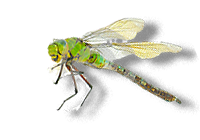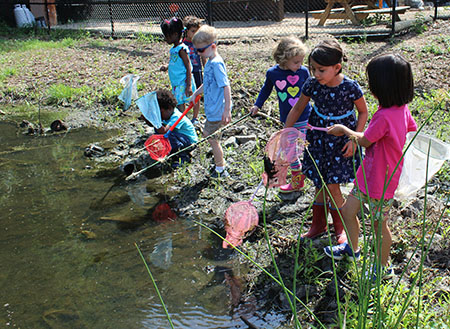
| Home | Week 1 | Week 2 | Week 3 | Week 4 | Week 5 | Week 6 | |
|---|---|---|---|---|---|---|---|
Teacher's Corner
Week 1 Lesson Plan
Here is a sampling of Kindergarten Maryland State Standards met:
CCSS.ELA-Literacy.RL.K.6
With prompting and support, name the author and illustrator of a story and define the role of each in telling the story. The Fly Guy series by Ted Arnold, was read for story time each day. Children discussed the author and illustrator each time as they looked forward to hearing a new story.
CCSS.ELA-Literacy.RL.K.9 With prompting and support, compare and contrast the adventures and experiences of characters in familiar stories. During each reading of Fly Guy, the stories were compared during a discussion. One episode was compared to a familiar song the children knew.
1C1c Draw pictures that correctly portray at least some features of the thing being described and sequence events During the pond visit, many children drew what they saw as they watched others catch bugs.

CCSS.Math.Content.K.CC.B.5 Count to answer "how many?" questions about as many as 20 things arranged in a line, a rectangular array, or a circle, or as many as 10 things in a scattered configuration; given a number from 1-20, count out that many objects. It turned out that the Yellow Room Camp had exactly 20 children. Children are counted many times throughout the day with many configurations. When one child was absent a subtraction problem presented itself.
Week 1

 This first week was spent reconnecting with old friends and making new ones. The children went over the importance of rules and during a brain storming session found out rules can all be categorized under "Being Kind". Most of the suggestions came under the heading of "being kind to our friends", with contributions from the children of: include other people in your games, listen to the teachers, and get help if someone is hurt.
This first week was spent reconnecting with old friends and making new ones. The children went over the importance of rules and during a brain storming session found out rules can all be categorized under "Being Kind". Most of the suggestions came under the heading of "being kind to our friends", with contributions from the children of: include other people in your games, listen to the teachers, and get help if someone is hurt.

Picking up on the enthusiasm for the study, some children became excited when they found bugs on the playground. One girl found a worm and another insisted this was not a "bug". "Yes it is, my mommy told me", was the answer given. One boy found an inch worm and brought it into the classroom. He wanted to feed it and thought we should "research" what they eat. "How should we go about researching it?", asked the teacher. "I think you could use Google, my Mama uses Google", was the boy's answer, and so we did. It was discovered that inch worms are the larvae of certain kinds of moths and that you should feed it the leaves of the tree that you found it on. Some other children found what they called an "army of ants" and became excited watching them move around an old log in the sand box. Questions like, "where are they going, and what do they eat?" came up. A girl brought some Japanese Beetles from home and shared them with the class.
 On Thursday the children took a walking field trip to a little pond not far from the school. Before going a list of "equipment" needed was generated. Wearing old shoes or boots, and armed with bug catchers and nets the children set to work catching the bugs in the pond. The bugs were plentiful and everyone had a chance to catch some. Descriptions heard were, some are like sticks, some like fish with little fins, and still others were descried as skating across the water. Children also took photographs and made drawings of their surroundings. Some of the catch was brought back to the class to observe closer.
On Thursday the children took a walking field trip to a little pond not far from the school. Before going a list of "equipment" needed was generated. Wearing old shoes or boots, and armed with bug catchers and nets the children set to work catching the bugs in the pond. The bugs were plentiful and everyone had a chance to catch some. Descriptions heard were, some are like sticks, some like fish with little fins, and still others were descried as skating across the water. Children also took photographs and made drawings of their surroundings. Some of the catch was brought back to the class to observe closer.